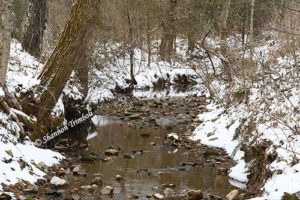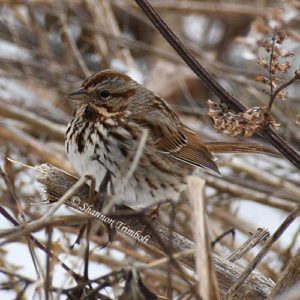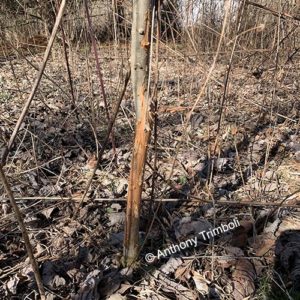Wow! February went just a wee bit crazy, didn’t it? Within about a week and a half to two weeks we had three different winter storms. (For friends and family living further north, that’s a lot of wintery weather in a short time for us.) That was after a relatively mild January.

The snow doesn’t bother me too much. I just huddle down at the farm and enjoy being tucked into a wintery white blanket. Since snow rarely lasts long, I learned a long time ago to just enjoy it and wait until it melts. I’m more concerned about ice because I know how quickly it can bring down trees and power lines.
We were lucky with all the storms. We didn’t get near as much ice (or snow) as originally predicted. We were stuck at home for about a week or so, but never lost power. I know many people across the country who weren’t as lucky.
Then this weekend we were inundated with rain and thunderstorms. The ground is very mushy over much of the farm. I’m happy that the next week looks rain-free to give things a chance to dry out. I’m also excited because the red maples and some of our early “yard weeds” will likely start blooming this week given the current forecast. Below are a few of my nature-related discoveries and observations over the last few weeks.

Rarely do we get enough snow to do much tracking, but it’s so much fun when we do. I followed these squirrel tracks all the way up to where they jumped on a tree.
The snow made the birds hungry and they appreciated the mealworms and suet that we put out for them. Because of our habitat, we have a lot of sparrows and although we think of sparrows as being seed eaters, they also took full advantage of the mealworms and suet.

After the snow melted, Anthony found a young sapling with part of its bark removed. In the fall, it would be easy to mistake this for a buck rubbing its antlers on the tree. However, this was done by a rabbit, not a deer. When snow and ice cover up the herbaceous forage that rabbits prefer to eat, then after a couple of days, they may resort to “survival food” and begin stripping bark from small saplings. That’s what happened here.
The bark stripping normally begins at the snow line and extends as high as the rabbit can reach when standing on its hind legs. A strip or two of bark removed from a sapling causes no real damage, but if the rabbit strips bark all the way around the trunk, then the tree will be girdled and killed. If you got hit by the recent February snow storms, then you may find evidence of rabbits gnawing on your trees as well.

So, what interesting nature-related discoveries have you made in your yard and community over the last few weeks? I always enjoy hearing what others are finding too.

Backyard Ecology: Exploring Nature in Your Backyard
Nature isn’t just “out there.” It’s all around us, including right outside our doors. Hi, my name is Shannon Trimboli, and I am the host of Backyard Ecology. I live in southcentral Kentucky and am a wildlife biologist, educator, author, beekeeper, and owner of a nursery specializing in plants for pollinators and wildlife conservation. I invite you to join me as we ignite our curiosity and natural wonder, explore our yards and communities, and improve our local pollinator and wildlife habitat. Learn more or subscribe to my email list at www.backyardecology.net.

Leave a Reply